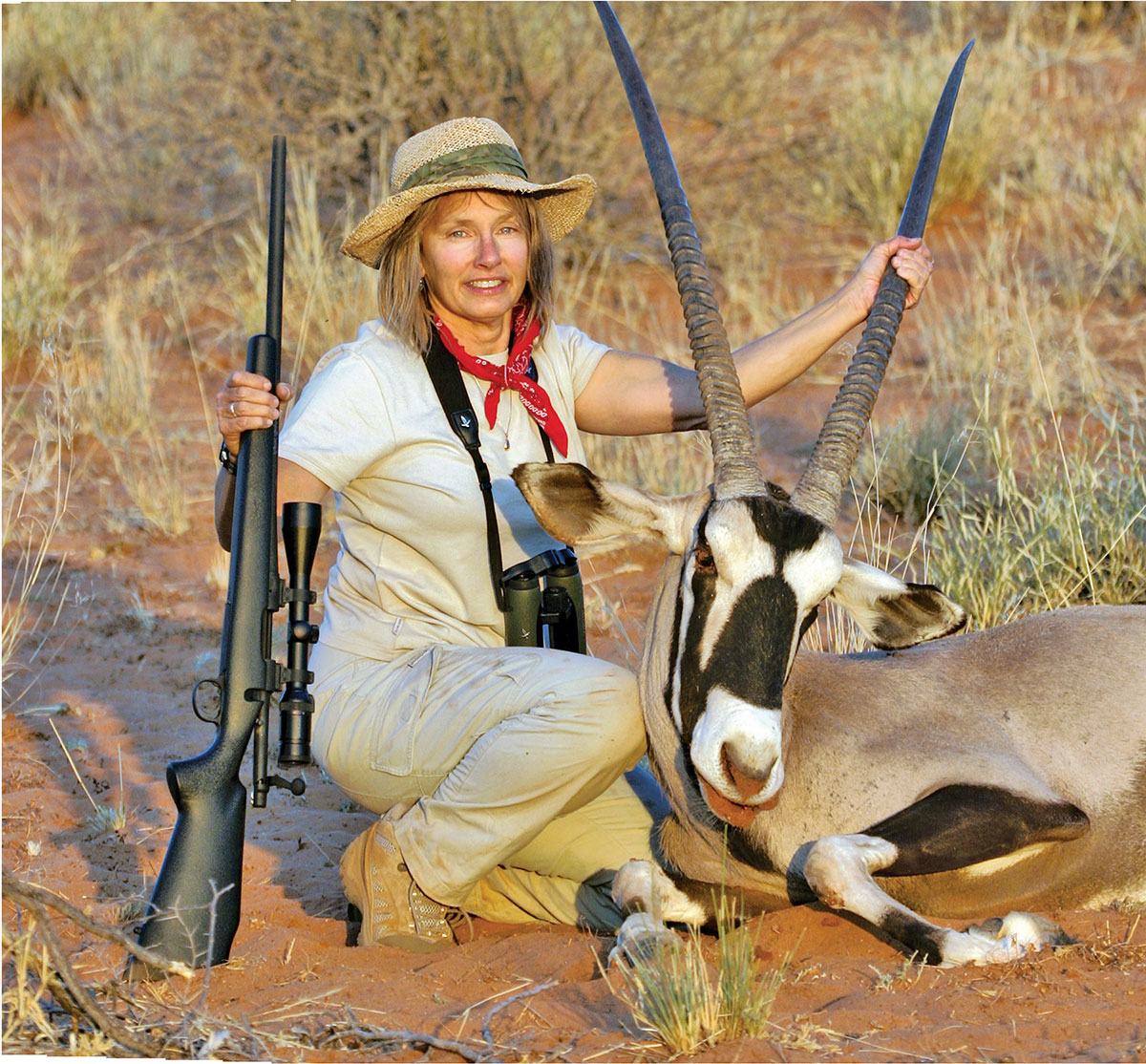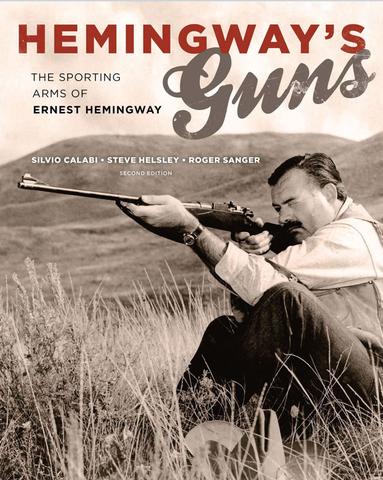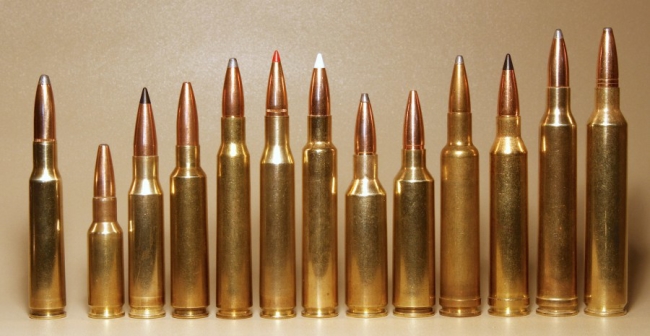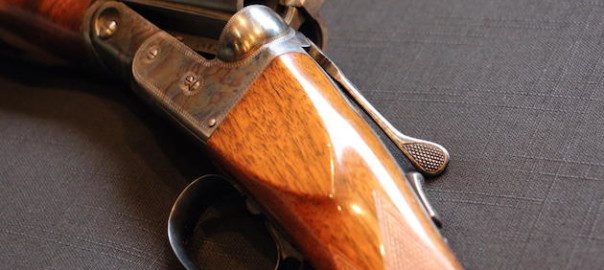Well, I can’t blame the gun writer for knuckling under the pressure, but I can blame him for not jilting the plain Jane .308 Win. for a more stimulating and, as it turns out, more effective cartridge such as the 7mm-08 Remington.
Yes, the .308 Winchester, also known as the “thirty-not-six,” can do it all, but it is average, middle-of-the-road boring. It’s also less effective than its 284-caliber offspring.
The 7mm-08 Rem. is “just” the 308 Win. case-necked down, but what a difference that bit of pre-nuptial necking makes. Flatter trajectory, less wind deflection and more energy downrange where it might actually matter.
The 7mm-08 Rem. is the modern version of W.M.D. Bell’s .275 Rigby, the British title for the 7x57mm Mauser. With that particular 7mm, Bell shot some 800 elephants and plenty of buffalo, lions and similar creatures judged too stout these days for anything less than a .375 H&H Mag.

The 7mm-08 Rem. can handle big bull oryx better than oryx can handle the 7mm-08. And small-framed shooters like my bride can handle both. Betsy Spomer killed this Namibian oryx with her Jarrett custom rifle in 7mm-08 Rem. sighted with a Swarovski 3-10×42 Z3 scope and throwing a 140-grain Swift A-Frame. Only one was needed to topple this bull.
I don’t care that Bell was an expert shot. If his 7×57 could routinely fell Cape buffalo, I’ve a strong hunch the 7mm-08 (which generally shoots 100 fps faster than the 7×57) can terminate an elk, moose, black bear or anything most of us hope to address with an overrated .308 Win., which is little more than a .30-’06 Short.
Remington legitimized the 7mm-08 in 1980, thus its moniker, but wildcatters were loading this cartridge as far back as 1958, the year Chevy corrupted its classic 1957 Bel Air Sport Coupe into the longer, homely 1958 model. The 7mm-08 actually improved the lines of the 308. And this little 7mm has a long, strong track record on all North American game and most African.
Lest you think I’m merely blowing smoke, let’s take a closer look at these two cartridges. The aforementioned gun writer celebrating the .308 prefers it with a Nosler 165-grain AccuBond up front. Good enough. I’ll take my 7mm-08 with Nosler’s 160-grain AccuBond leading the way. Fair enough? We’ll zero each three inches high at 100 yards to maximize Point Blank Range for an 8-inch target “kill zone.” We’ll mount our scopes 1.5-inch above bores. Let’s launch both projectiles at 2,700 fps in a 10-mph right angle breeze and see where they end up.
There’s not a huge ballistic performance difference, but the 7mm does win the race. Less drop. Less drift. It even beats the wider, heavier .308 bullet to the punch.
This downrange energy advantage surprises and mystifies many shooters. How can a lighter .284-inch bullet fired at the same velocity as a heavier, wider .308-inch bullet have more knockdown energy? How can the smaller bullet pack more wallop? And the answer is its higher B.C. number, a measure of its efficiency. The wider .308-inch bullet battles more air resistance, and that’s always a drag. The narrower .284-inch projectile slips more efficiently through the atmosphere, saving its punch for the target.
No deer or elk is going to detect this extra slap of the 7mm-08, but it’s germane to this topic because most hunters assume the .308 Winchester is “better” than the 7mm-08 Remington because it’s bigger, thus hits harder. That’s simply not physical reality.
Note also the higher S.D. (Sectional Density) rating of the .284 bullet. S.D. has long been touted as the key to deeper penetration, thus enhanced terminal performance on game, although today’s controlled expansion bullet designs minimize that advantage.
The take-away from all these numbers is that larger calibers and heavier bullets do not automatically translate into superior performance. As I see it, the 7mm-08’s most significant advantage over its parent cartridge is its reduced wind deflection at long range, one of the most difficult trajectory components to judge and correct in the field. For that reason alone, the 7mm-08 should be the more popular long range round. What sniper would intentionally choose a cartridge that yields four more inches of drop and four more inches of drift at 600 yards? In exchange for that advantage, 84 foot-pounds less punch? From a ballistics standpoint, doting on the .308 as a sniper round makes no sense.
The .308 Win. does have a significant advantage over the 7mm-08 Rem. in ammo variety and availability, including reduced power loads for practice. Handloaders will find bullets from 100 grains to 220 grains in .308, from 100 to 180 grains in .284. But let’s be realistic: most hunters are going to work with 150-grain to 180-grain projectiles in the .308 Win., 140 to 175 grains in the 7mm-08 Rem.

The 7mm-08 has a long, strong track record on all North American game and most African.
In those categories, there are plenty of bullet options in factory ammo for both cartridges. Remington, Norma, Winchester, Swift, Federal, Hornady, Nosler, Browning, Fiocchi, Barnes, DoubleTap and HS—all are building 7mm-08 ammo.
As for the convenience of buying ammo on an exotic hunt after your airline conveniently “loses” what you packed and paid them to deliver, you probably will find .308 Win. more often than 7mm-08. However, some countries reportedly don’t allow importation of any .308 Win. rifle or ammo because it’s considered a military round (7.62 x 51mm NATO.)
What might sway some shooters over to the 7mm-08 Rem. is its slightly reduced recoil. In 7-pound rifles, the 7mm puts out 17.18 foot-pounds free recoil, the .308 kicks with 17.94 f-p. Again, not a huge difference, but for some sensitive shooters, it might be enough. Couple it with the 7mm-08’s ballistic advantages, and it should be a done deal.
So why does the .308 Win. remain the runaway favorite? I doubt there’s a rifle brand that isn’t chambered for the .308 Win. Every new “long range” iteration is released first in .223 Rem. and .308 Win., never 7mm-08 Rem. Why?
The .308 Winchester enjoys the military advantage. As an official round in a number of U.S. and NATO allies’ battle rifles and sniper rifles, it’s widely known and understood. You get a few hundred thousand soldiers mustering out and looking for a recreational rifle, chances are they’re buying something they know. And it isn’t the 7mm-08 Remington.
The .308 Winchester is, of course, a fine cartridge with more than enough performance to handle virtually any game at responsible hunting distances. The small trajectory and energy advantages the 7mm-08 Remington has over it are nothing to get giddy over. But they are real, which niggles at my sense of justice.
It’s just not fair to shooters that the industry continues to portray the .308 Win. as some kind of superior long-range target and sniper round. The incredible popularity of the .308 Winchester doesn’t mean the 7mm-08 is not the superior cartridge. Because, ballistically, it is.
 Ernest Hemingway’s friend A.E. Hotchner once described a “yellowed four-by-five picture of Ernest,” shown him by Hemingway, “aged five or six, holding a small rifle. Written on the back in his mother’s hand was the notation, ‘Ernest was taught to shoot by Pa when 2½ and when 4 could handle a pistol.’”
Ernest Hemingway’s friend A.E. Hotchner once described a “yellowed four-by-five picture of Ernest,” shown him by Hemingway, “aged five or six, holding a small rifle. Written on the back in his mother’s hand was the notation, ‘Ernest was taught to shoot by Pa when 2½ and when 4 could handle a pistol.’”
Firearms and shooting infused Hemingway’s existence and thus his writing. He was a member of his high-school gun club and went to war when he was eighteen. He hunted elk, deer, and bear in the American west and went on two extended African safaris, which figured hugely in his writing and changed his life. To the day of his death, Hemingway remained an avid hunter, first-class wingshot, and capable rifleman.
Following years of research from Sun Valley to Key West and from Nairobi, Kenya to Hemingway’s home in Cuba, this volume significantly expands what we know about Hemingway’s shotguns, rifles, and pistols—the tools of the trade that proved themselves in his hunting, target shooting, and in his writing. Weapons are some of our most culturally and emotionally potent artifacts. The choice of gun can be as personal as the car one drives or the person one marries; another expression of status, education, experience, skill, and personal style. Including short excerpts from Hemingway’s works, these stories of his guns and rifles tell us much about him as a lifelong expert hunter and shooter and as a man. Buy Now




